Affiliate links on Android Authority may earn us a commission. Learn more.
Acer Chromebook 13 review: A premium Chrome OS laptop for a premium price
Published onDecember 23, 2018
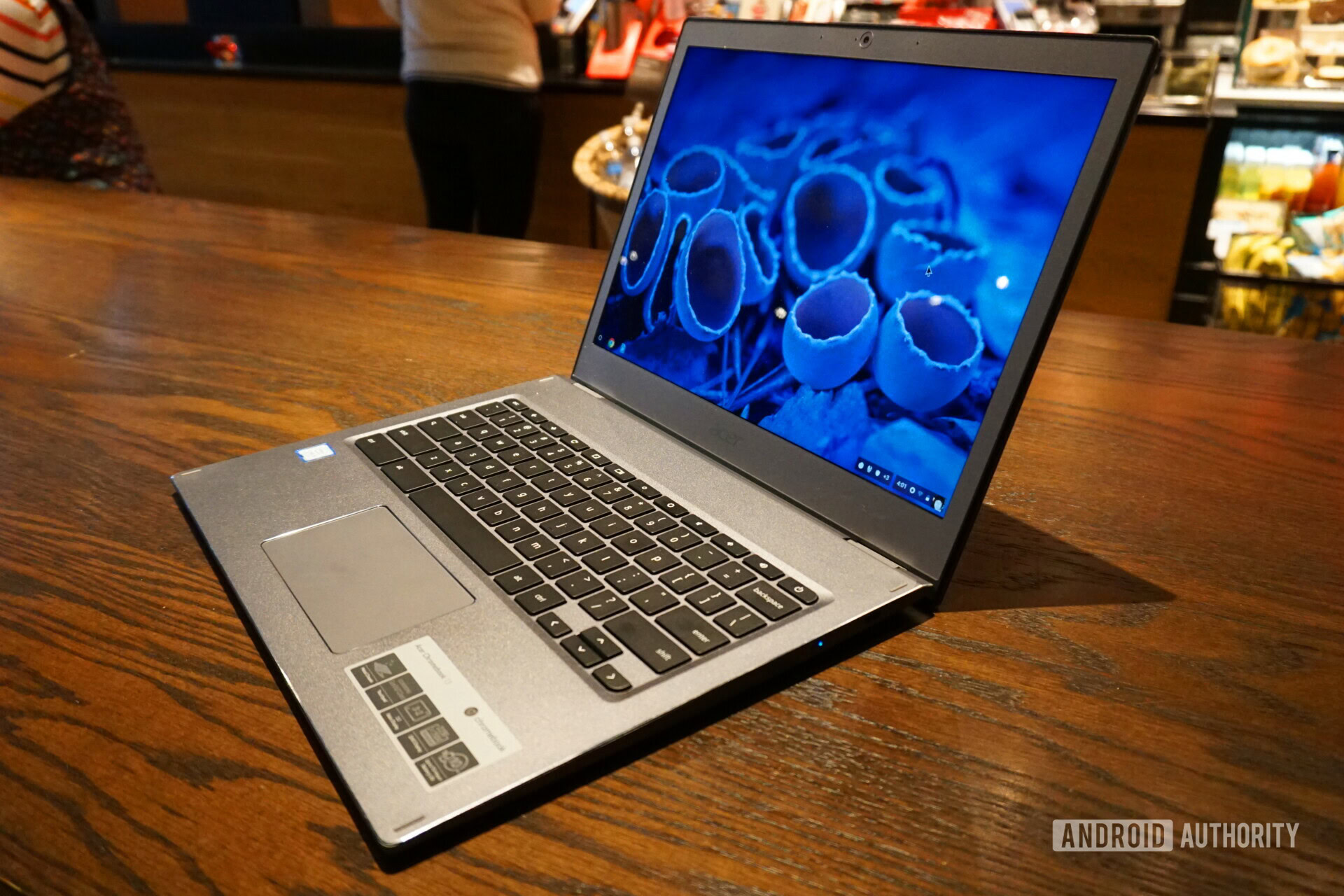
Acer is no stranger to Chromebooks. It probably leads the pack in market saturation. Chromebooks are typically cheap, making them great solutions for education. However, a few trickle out each year targeting professionals with premium price tags.
Enter the Acer Chromebook 13.
With this model, Acer is targeting businesses with a dark, all-aluminum design, a powerful processor, and a high screen resolution. It’s beautiful to behold and cool to the touch. Let’s examine Acer’s Chromebook from all angles and give it a thorough beating.
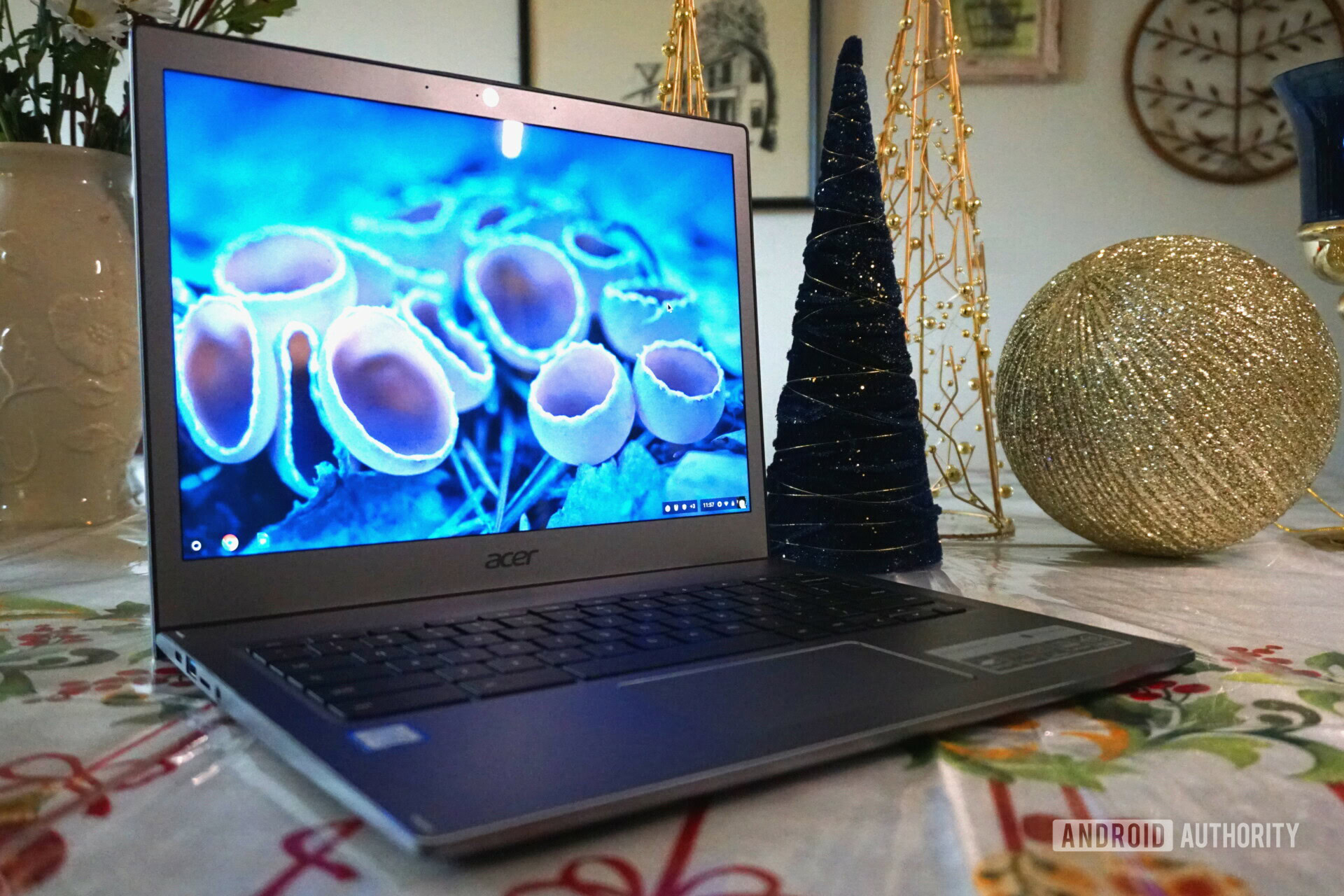
The model provided for this review is CB713-1W-56VY. It’s based on Intel’s eighth-generation Core i5-8250U four-core processor, 8GB of LPDDR3 system memory, and 64GB of storage. You’ll also find an embedded 720p webcam, integrated graphics, and a decent 13.5-inch IPS screen. This model sells for $800.
Display

The Acer Chromebook 13 has a 13.5-inch screen. That sounds small compared to typically larger laptops, but you won’t miss those extra inches here. It’s plenty big for executives on the go who don’t need all that bulk traveling between meetings and conventions.
The Chromebook’s IPS panel promises wide viewing angles and deep colors. It renders an incredibly high 2,256 x 1,504 resolution — a big leap over Lenovo’s 11.6-inch Chromebook C330, but short of the Pixelbook’s 12.3-inch screen with a 2,400 x 1,600 resolution. The “Spin” version of Acer’s Chromebook features the same screen.
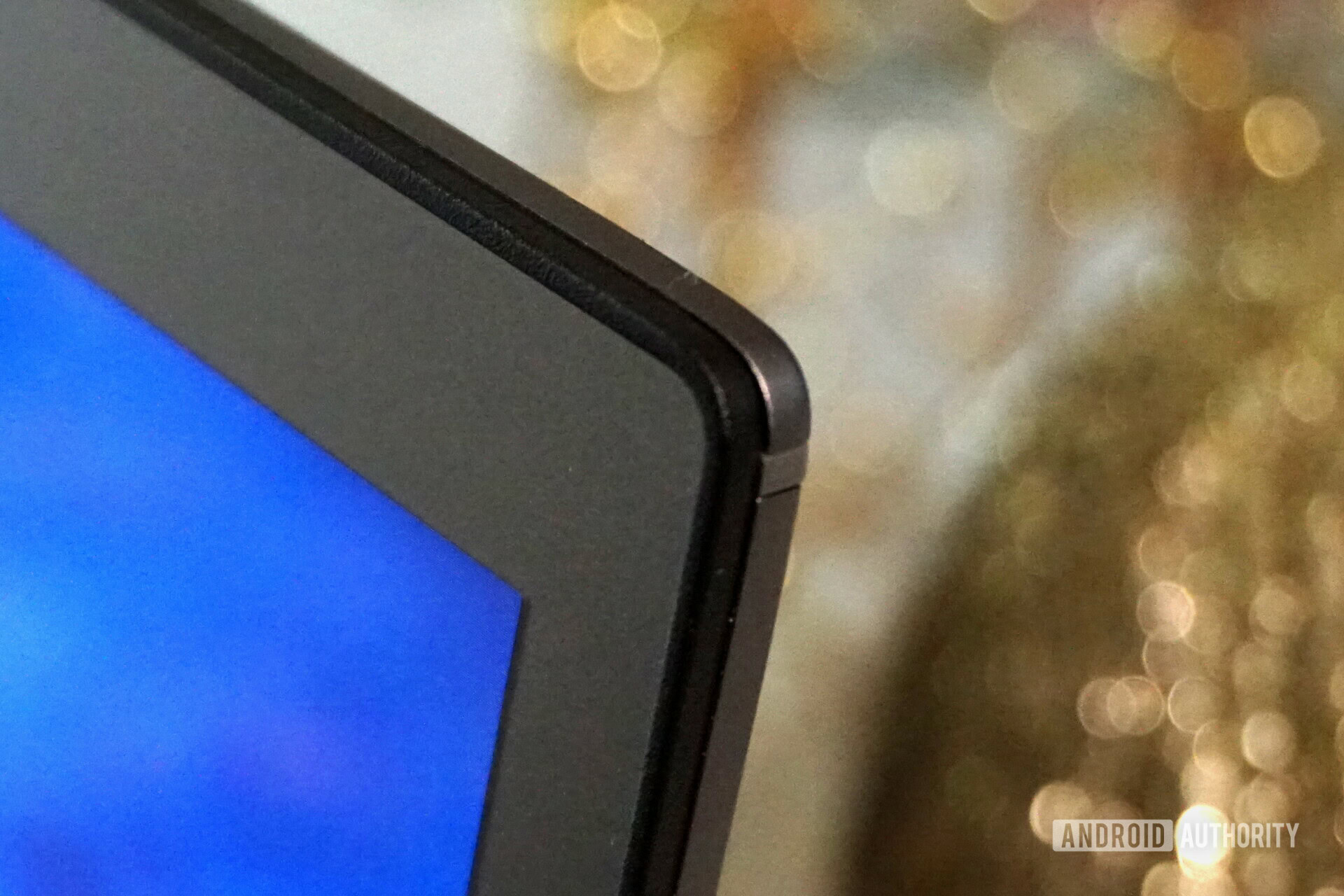
On a color level, this Chromebook performs. Even at the maximum brightness (380 nits), you’ll see vibrant reds and deep blues. That changes somewhat when you view the screen from the sides instead of head-on, as the colors darken and become less vibrant due to insufficient lighting. The specifications say viewing angles are up to 170 degrees.
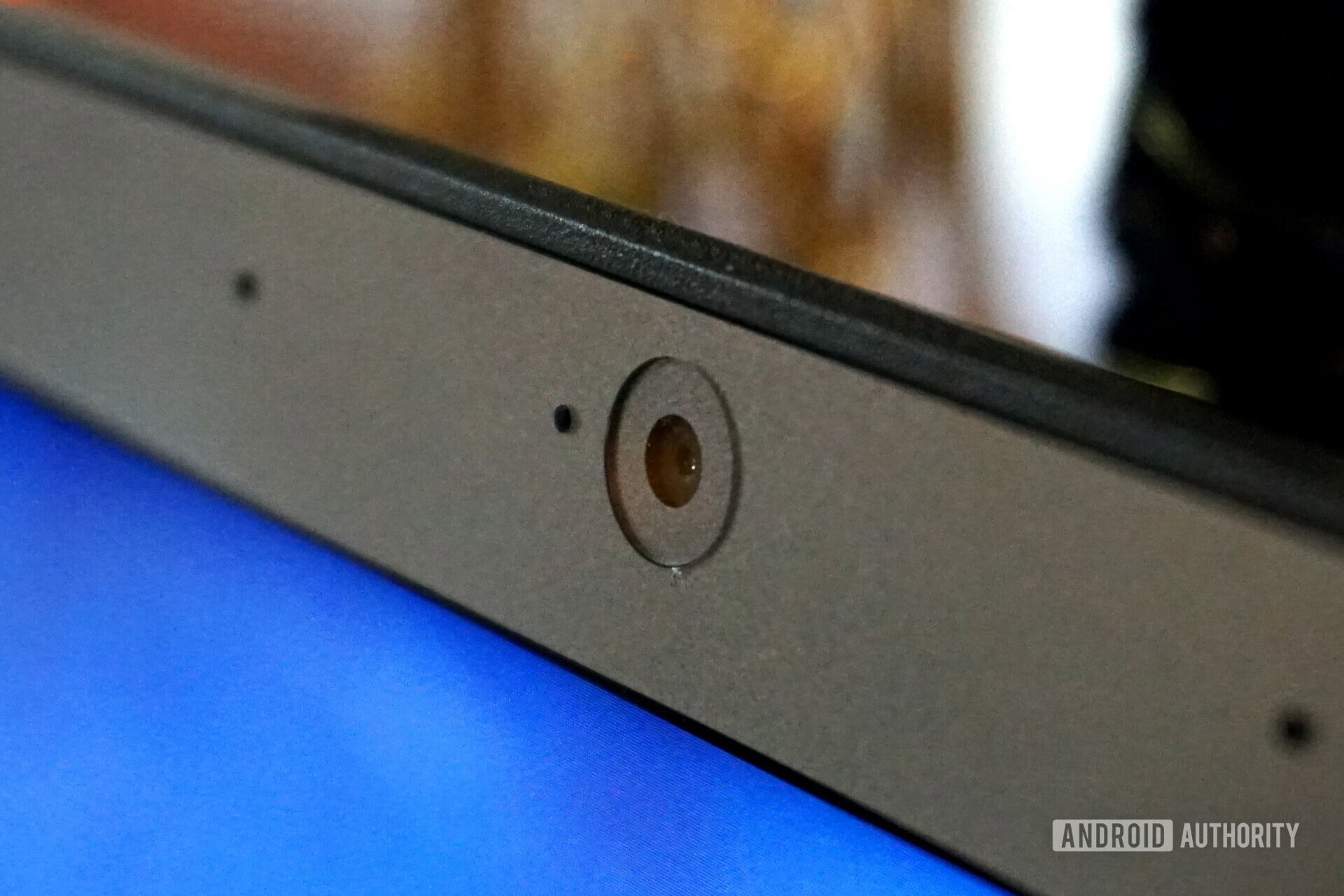
Surrounding the screen is a steel gray bezel. They’re not bad visually, but they don’t blend in with the display as seen with Lenovo’s Chromebook C330. They’re roughly a half an inch on each side and three-fourths of an inch from the top. Visually the bottom bezel is a full inch although it continues to extend down another half an inch below the keyboard area.
Build quality and sound
One of the build features I love about this Chromebook is the hinge. Looking straight on you can barely see a hint of the left and right hinges embedded in the main body. There’s no ugly gap between the base and the display due to the lid extending down beyond the keyboard area. If you look close enough from the side, however, you will see a slight gap between the base and the lid, but nothing really detracts from the Chromebook’s brilliant design.

This Chromebook features an all-aluminum steel gray chassis with a sand-blasted matte finish. It’s simply beautiful, with shiny silver diamond-cut trimming running along the edges and around the trackpad. A black trim runs along the outer edge of the screen’s bezels while the keyboard key caps are a dark grey. The trackpad is steel gray as well, blending in with the overall professional, modern look.

The port complement, however, isn’t quite so glamorous. On the right you have a single USB Type-C port. On the left you get another USB Type-C port, one regular USB port, a microSD card slot, and a 3.5mm audio jack. There are no other outputs, so you’ll have to purchase a USB hub or an HDMI adaptor for video output. To be fair, this is pretty typical of most Chromebooks, but we’d like to have seen more here.

I’m also not keen on the speaker placement. They’re mounted on the bottom, projecting sound away from your ears and onto any surface the Chromebook sits on, like a desk or airplane tray table. The sound isn’t bad, it just sounds muffled bouncing off surfaces and projecting through the keyboard. If this Chromebook had a 360-degree hinge, you could’ve used Tent or Stand mode for better, crisper audio.
The air intake grille also resides on the bottom. If you look closely through the openings, you can actually see the CPU fan inside. Unwanted hot air blows through vents on the rear in the hinge area. This may or may not be problematic given the lid extends down to the bottom of the base, blocking those exports.
As for size and weight, Acer’s Chromebook measures just 0.67 inches thick and weighs 3.5 pounds, decent compared to other standard laptops and Chromebooks, which often feel like you’re lugging around a small child. The 13.5-inch screen helps reduce the overall bulkiness, making this Chromebook easy to carry from one meeting to another.
Keyboard and trackpad

The keyboard’s huge keys bounce to the touch and they’re backlit. In a bright office environment, the light is somewhat noticeable, barely seeing around the keys. In a darker room, the backlighting does a good job illuminating your typing experience. The lighting turns off after around 30 seconds of inactivity. It’s also possible to adjust the keys by pressing ALT while holding the Brightness up or down keys.
There’s nothing out of the ordinary with this keyboard. It provides keys for back and forward, maximizing the current app, switching app windows, changing the screen brightness, and changing the audio level. A dedicated search key resides on the right between the Tab and Shift keys.
On a performance level, the keyboard is responsive and pleasant to use.
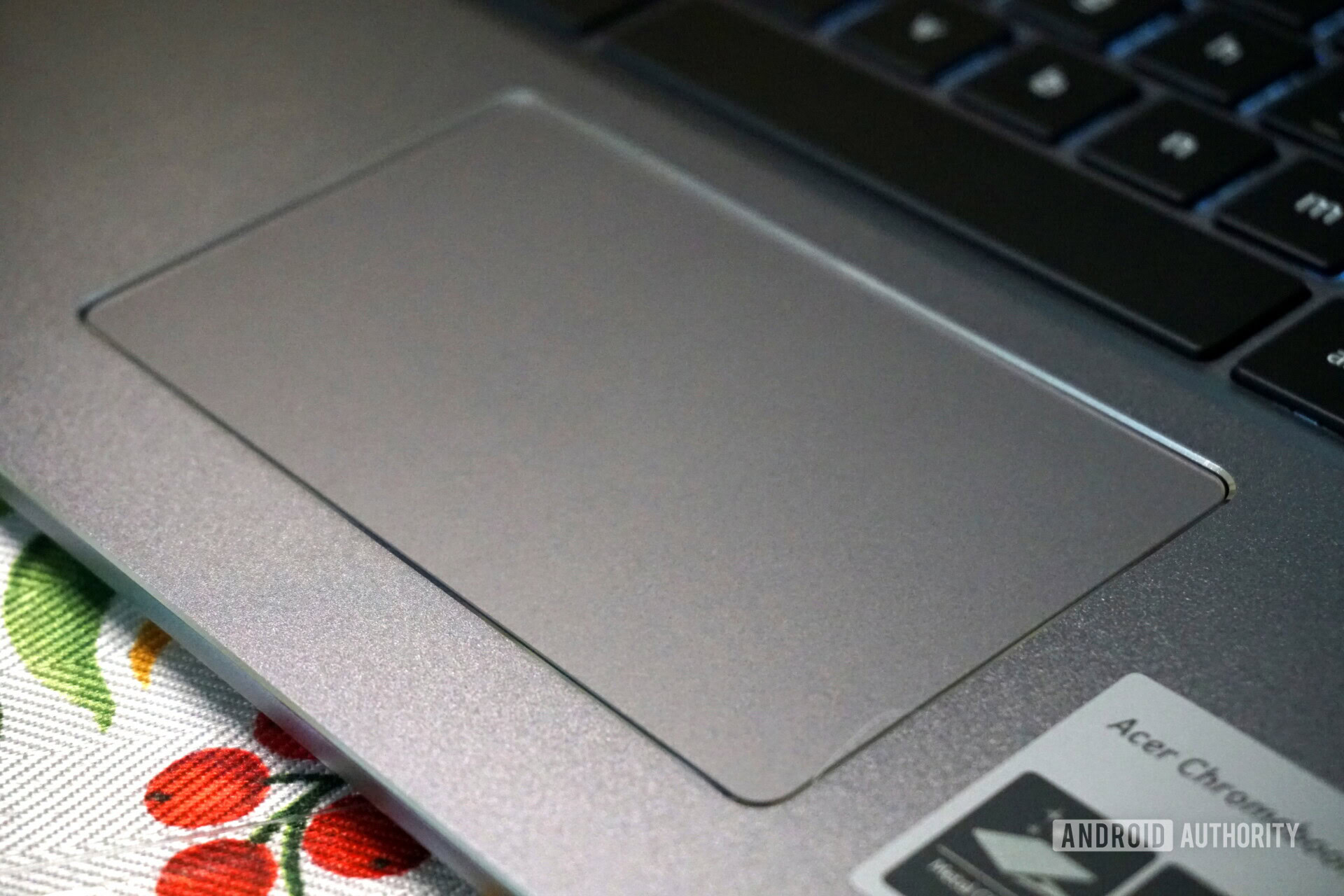
The same holds true with the trackpad. It’s cool to the touch and promptly tracks my finger with very little pressure. It’s protected by Corning Gorilla Glass, providing an extremely smooth touch experience. Press down with one finger to left-click, press down with two fingers to right-click, and slide both fingers to scroll.
Processor performance
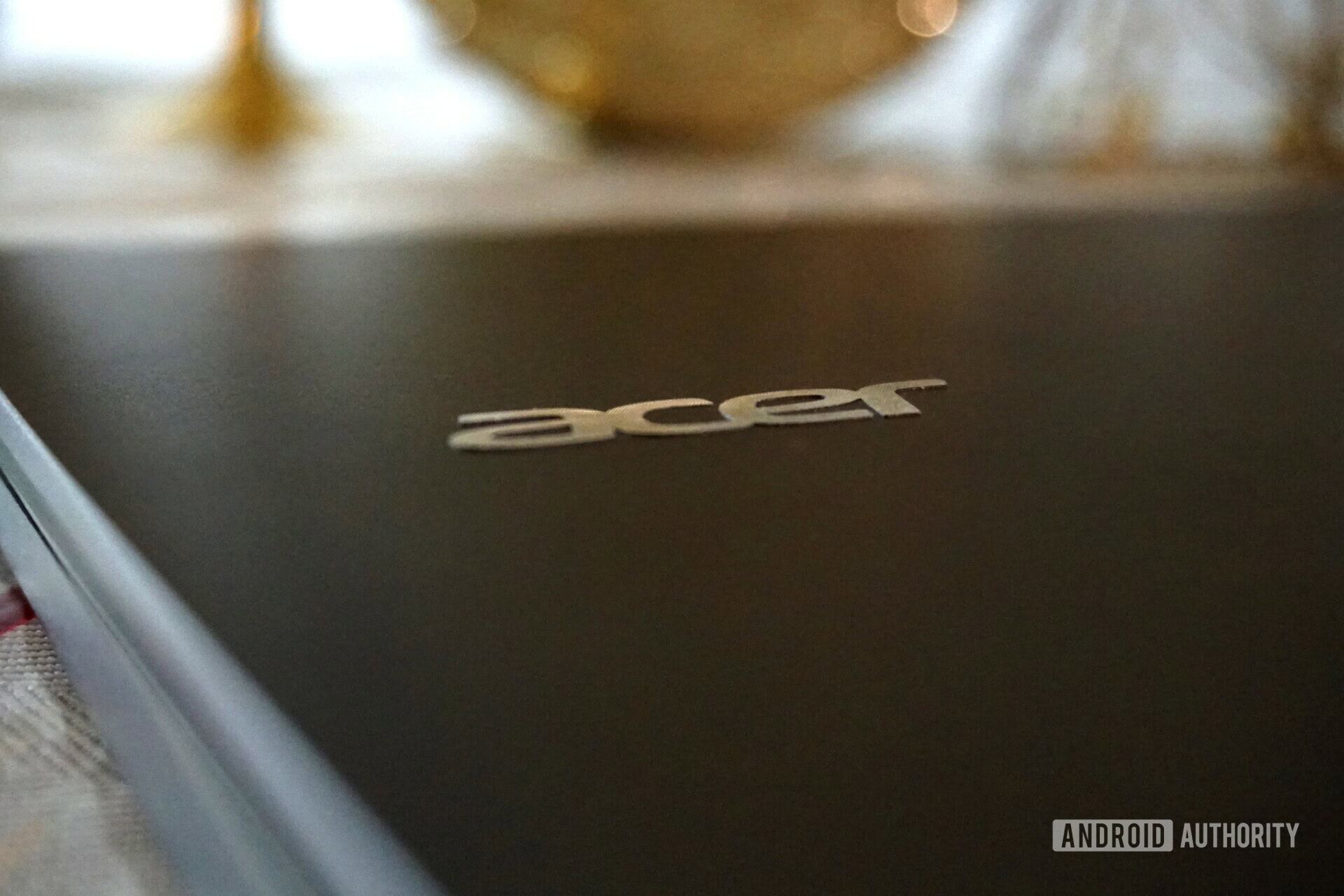
The processor installed in Acer’s Chromebook is the same CPU used in the company’s Chromebook Spin 13 and Chromebox CXI3-I58GKM: The Core i5-8250U. Despite its eighth-generation label, it’s technically built on a refreshed seventh-generation architecture released in the second half of 2017. However, that’s okay as we’ve seen in other tests this CPU is overkill regarding Chrome OS.
Intel’s four-core processor scored 4,266 in the Geekbench single-core test, placing it between the Spin 13 (4,286) and Chromebox (4,393). It outperformed the MediaTek MT8173c chip installed in Lenovo’s latest Chromebook C330 by a large margin which managed a lower score of 1,457.
Meanwhile, the Chromebook 13 did slightly better in the Geekbench multi-core test than the Chromebook Spin 13, scoring 10,977 versus the Spin’s 10,876. As with the single-core test, the Chromebook 13 fell behind Acer’s latest Chromebox that managed a slightly higher 11,155. By comparison, all three Acer Chrome OS products outperformed Lenovo’s Chromebook C330 with the MediaTek chip, which only managed 2,984 in the multi-core test.
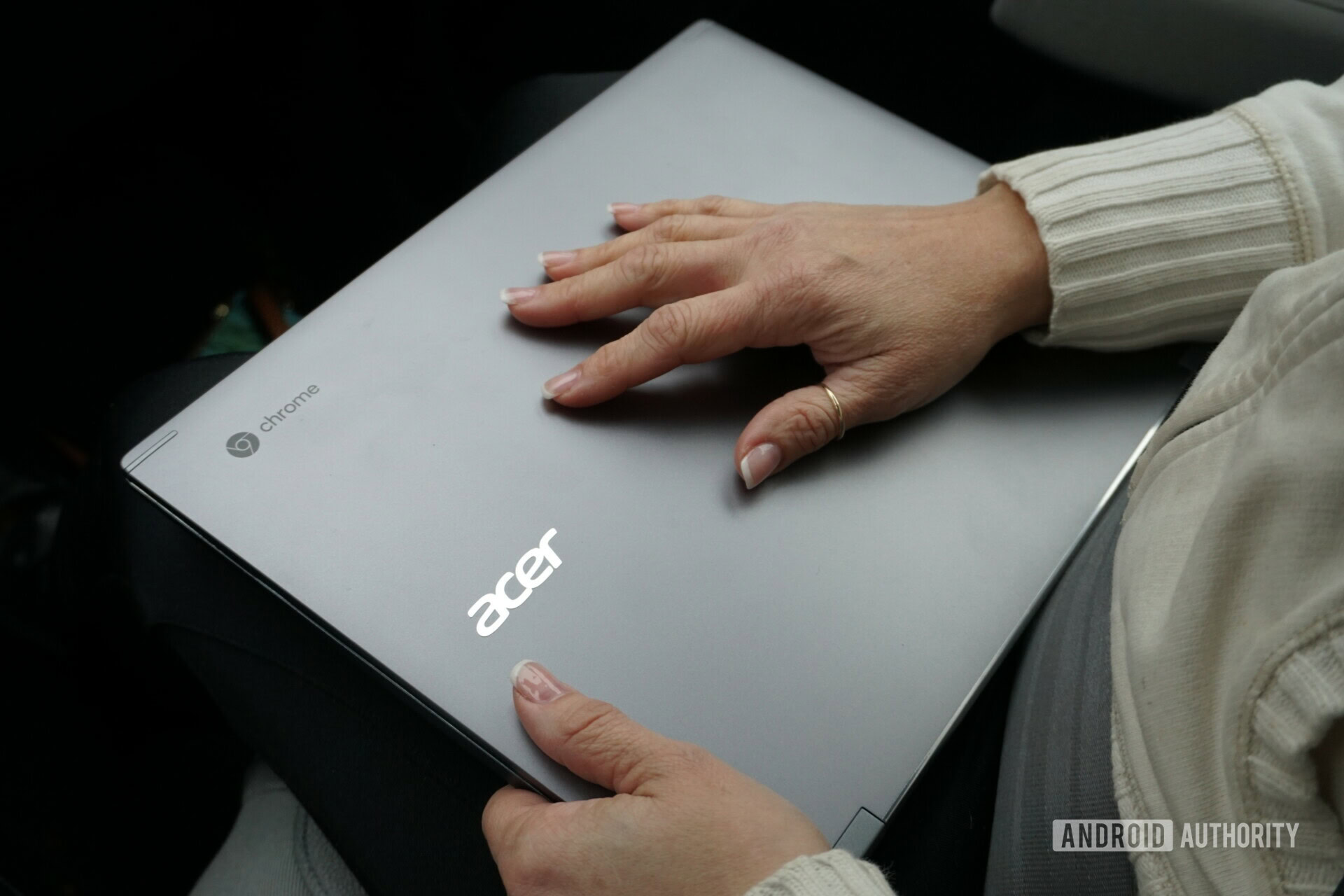
We ran a few other tests as well including web-based versions suggested by Acer. The Chromebook fell slightly behind the Chromebox we recently tested, scoring 476.11 in BaseMark Web, 171.97 in JetStream, 36149 in Octane and 1167ms in Kraken. We attempted to run AnTuTu but the application crashed during the testing process just as it did on the Chromebox.
While numbers are great for comparison, real-world performance is more important. You’ll see the processor’s full glory while using local apps, like loading Google Play and its storefront near instantly. Games are quick to load as well while the overall Chrome OS interface is zippy and smooth. That’s not surprising given the lightweight operating system and the over-qualified processor.
If you need to get things done quickly, this Chromebook has you covered. Whether you’re using web-based apps or locally-installed Android apps, Acer’s Chromebook definitely provides the performance you need, if not more.
Graphics performance

Intel’s Core i5 processor includes an integrated UHD Graphics 620 component with a base speed of 300MHz and a maximum speed of 1.10GHz. It’s not designed for high resolution gaming, but we can run a few benchmarks to see how the GPU performs under pressure. Here we used 3DMark and GFXBench to see the framerates and compare them to other Chrome OS-based devices.
In the OpenGL-based Sling Shot Extreme test in 3DMark, the Chromebook 13 managed 4,503 points, putting it behind the Chromebook Spin 13 (4,516) and the Chromebox CXI3 (4,599). On a framerate level, the Chromebox had a 28.6fps average in Sling Shot Extreme Test 1 while the Chromebook 13 was in the same ballpark with a 28.2fps average. For comparison, Lenovo’s Chromebook C330 scored 805 points in the Sling Shot Extreme Test, managing only 4.6fps in Sling Shot Extreme Test 1.
In the GFXBench Aztec Ruins High benchmark, the Chromebook Spin 13 and the Chromebook 13 both hit an 11fps average using a 2,256 x 1,428 resolution. Our testing with the Chromebox CXI3 produced a higher average of 21fps because we were locked down to an external test display with a lower 1,680 x 1,002 resolution. Other tests lock the resolution, such as Manhattan 3.1 generating a 22 to 23fps average on the Chromebook 13 and Chromebox using a 1440p resolution.
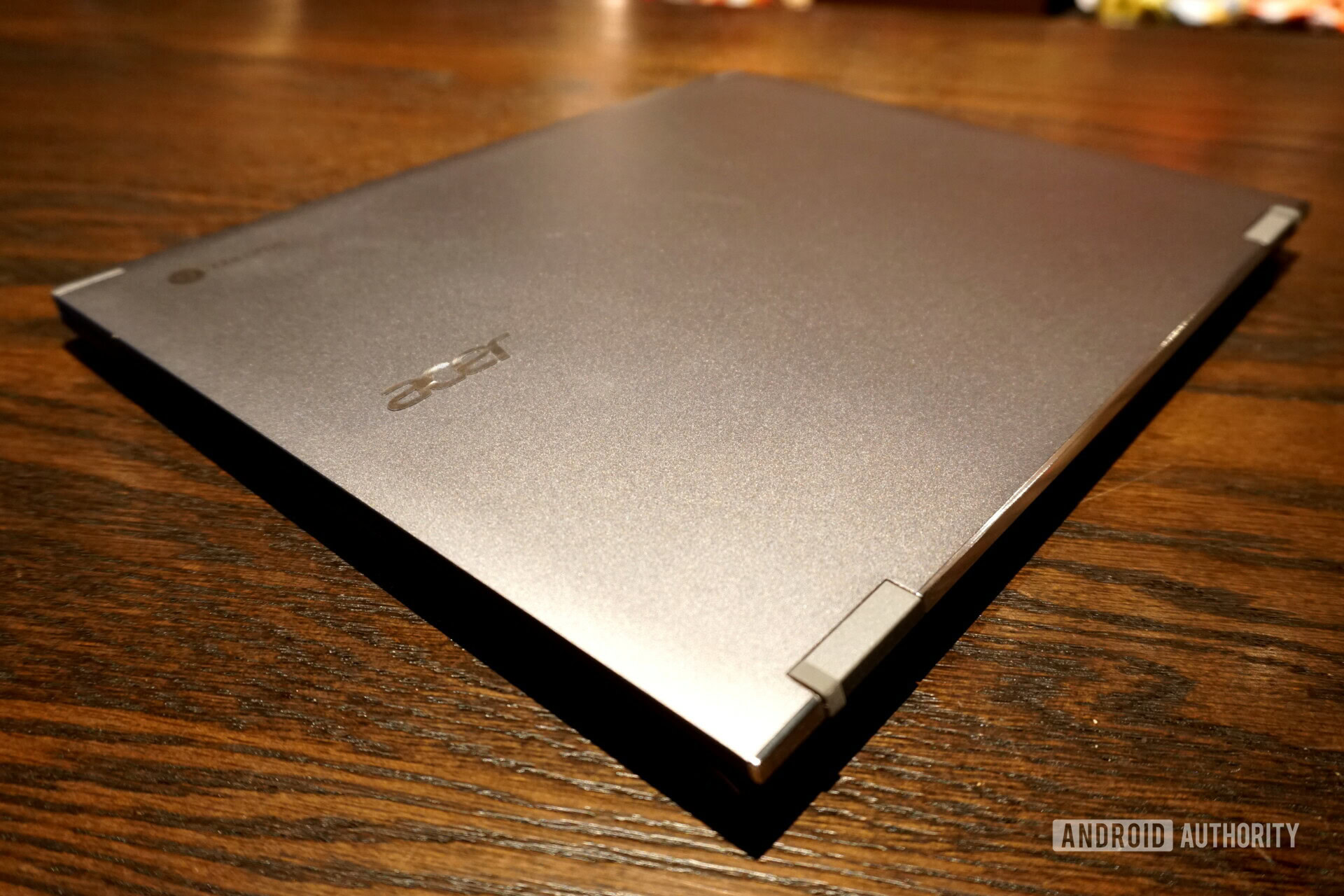
Although Android apps are currently a hit or miss regarding performance, I played a few Android games to test the GPU. The first-person shooter Shadowgun Legends looked and played great in full-screen mode although the display doesn’t support touch input. The framerate was slightly lower than Dead Trigger 2, which played beautifully on Intel’s integrated GPU given the game’s environment isn’t quite so wide. Other games I typically play on Android simply didn’t show up on Google Play because they’re not compatible with Intel’s processor, like Order & Chaos 2. Bummer.
This isn’t anything new. I came across this issue on the Chromebox CXI3. I had the same controller limitations as well, forcing me to use an old Rockcandy Xbox 360 controller instead of a wired Xbox One controller or my MOGA Pro controller for Android. Still, given this Chromebook targets professionals, owners are less likely to shoot zombies and robots.
If you’re a mainstream customer who wants a sleek, elegant Chromebook with a premium price, at least you know it’s capable of playing games. Chrome OS leans more towards web-based apps, however, like Arcane Legends and the other Legends-branded games, though that may change in time as Google improves Android support.
Battery performance
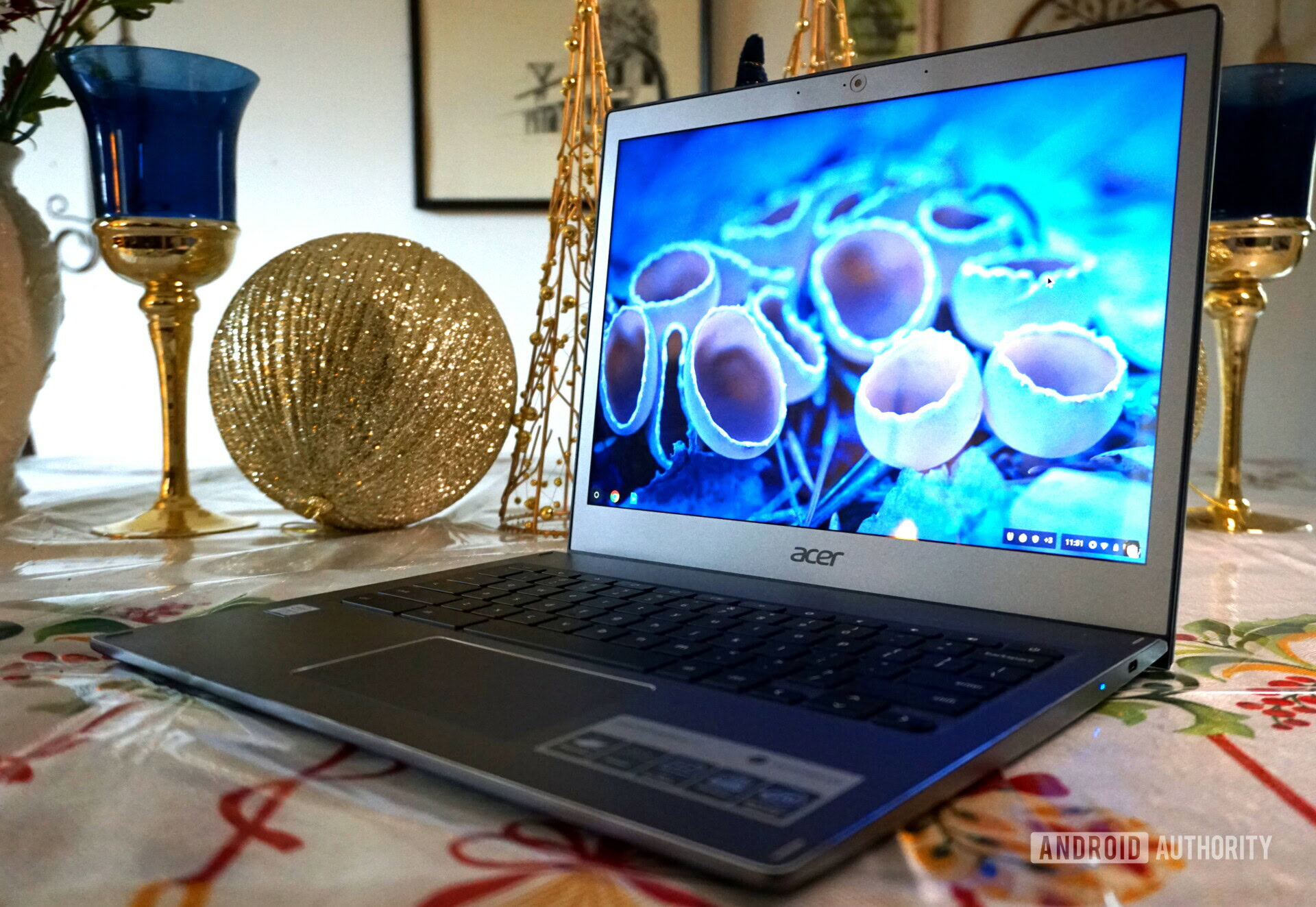
This Chromebook relies on a 54WHr battery (4,670mAh) promising up to 10 hours on a single charge. I used four benchmarks to test this, the first of which continuously loads webpages until the Chromebook shuts off. Because the average person isn’t going to use a light meter, I tested using 100 percent and 50 percent brightness levels. At 100 percent, this browser test killed the battery in five hours and 25 minutes. At 50 percent, the battery gave up after eight hours and 39 minutes.
In my video test running the five-minute Aquaman 1080p trailer in a loop, the battery endured seven hours and 29 minutes with the screen at 100 percent brightness and a far better 11 hours and 12 minutes with the screen set at 50 percent.
Chrome OS provides the built-in CROSH tool as well that tests the battery depletion rate within 600 seconds. With the screen set at 100 percent, the battery drained 2.58 percent in 600 seconds while it drained 0.94 percent with the screen at 50 percent brightness.
If you’re wanting a sleek, elegant Chromebook at a premium price, at least you know it’s capable of playing games.
In all cases, the Lenovo Chromebook C330 scored better in the battery tests despite its underperforming processor. While Lenovo’s Chromebook lasted 20 to 30 minutes longer with the brightness set at 50 percent, I saw a wider gap between these two Chromebooks with the brightness set at 100 percent: A two hour and 26 minute difference in the browsing test and a two hour and 24 minute difference in the video loop test.
This is why light meters are often used in comparisons — Lenovo’s 50 percent setting might be different than Acer’s setting — but you’re not going to use one of those. You just want to know how long the battery will last, and in both cases, these Chromebooks mostly provide a decent amount of up-time no matter their brightness level. The Chromebook 13’s browsing test at a 100 percent brightness could be better, however.
Software and apps
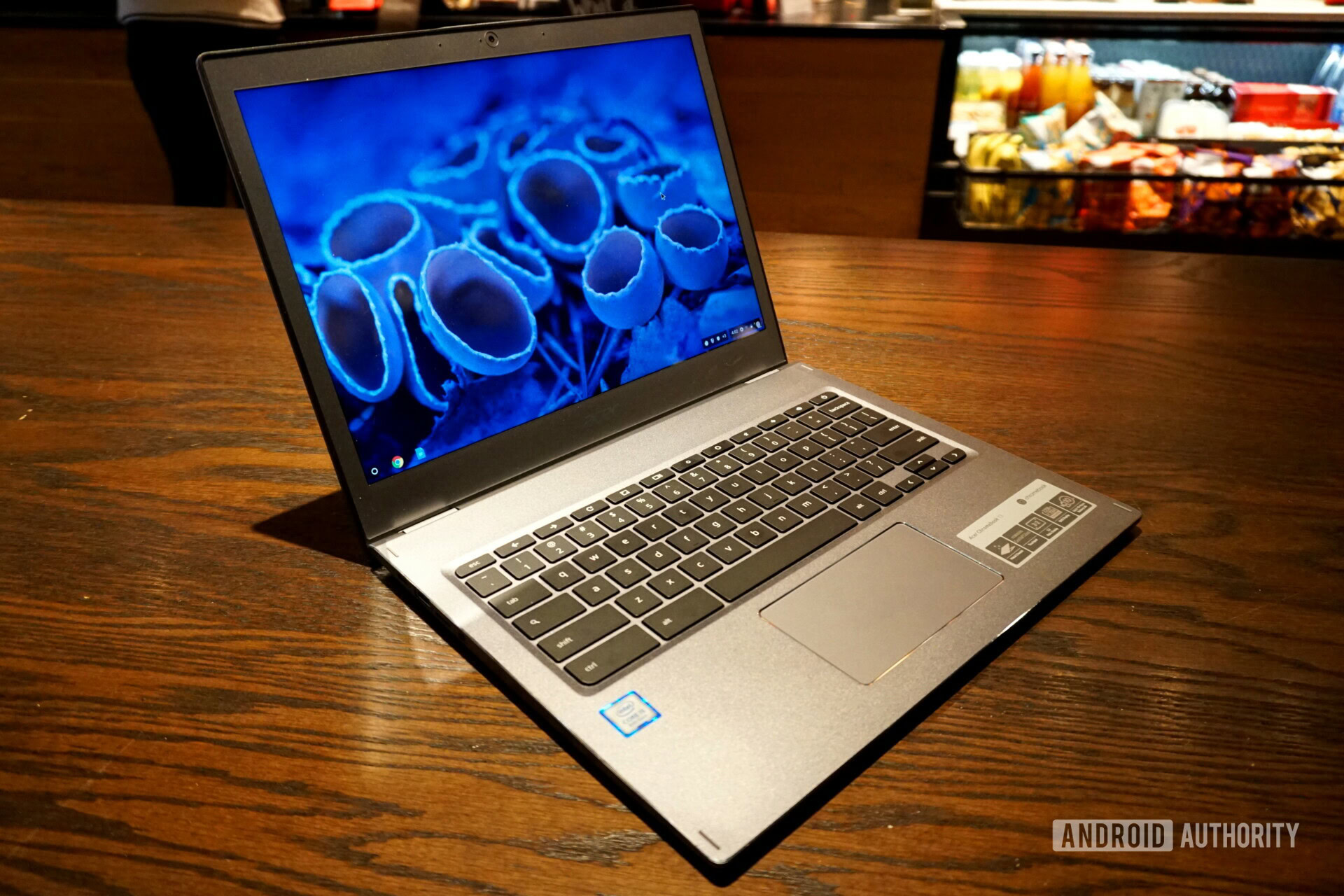
Because Acer’s Chromebook targets the enterprise market, the company highly suggests many web-based applications for healthcare, printing, productivity, desktop-as-a-service, communication, and more. These include HealthCast, Citrix, VMWare, GSuite, Cisco Webex, Chromotif, PrinterLogic, SalesForce, and Adobe.
Acer doesn’t install these apps out of the box, but Google Play is ready to go from the start. The company routinely points out “the developing nature” of Android support, hinting at the current hit-or-miss performance of Android apps on Chromebooks. Chrome OS is a web-focused platform first, so you will see better performance in solutions served up on its Web Store than on Google Play.
We’ve seen in other tests that this CPU is overkill regarding Chrome OS.
After using Windows and MacOS over the years, I’m not a big fan of Google’s Settings layout in Chrome OS. Although the platform is based on a browser design, it feels too much like a browser. It needs a visual overhaul with icons, so you’re not continuously scrolling down a browser page hunting for a setting.
Out of the box, you won’t see any “bloatware” on Acer’s Chromebook. Typical web-based applications include YouTube, Chrome, Google Maps, Google Drive, Sheets, and more. Anything you installed on a prior Chromebook from the Chrome Web Store or Google Play will automatically download and install on the new device.
Specifications
| Model | CB713-1W-56VY |
|---|---|
Screen size | 13.5 inches |
Panel type | IPS |
Resolution | 2,256 x 1,504 |
Processor | Intel core i5-8250U |
Graphics | Intel UHD Graphics 620 |
Memory | 8GB LPDDR3 (Soldered) |
Storage | 64GB eMMC (SanDisk) |
Connectivity | Wireless AC (867Mbps) Bluetooth 4.2 |
Ports | 1x Micro SD card reader 2x USB Type-C (5Gbps) 1x USB Type-A (5Gbps) 1x 3.5mm audio jack |
Camera | 720p |
Battery | 54 WHr (4670 mAh) |
Power adapter | 45 watts |
Dimensions | 12.19 (W) x 9.68 (D) x 0.67 (H) Inches |
Weight | 3.5 pounds |
Color | Steel Gray |
Conclusion
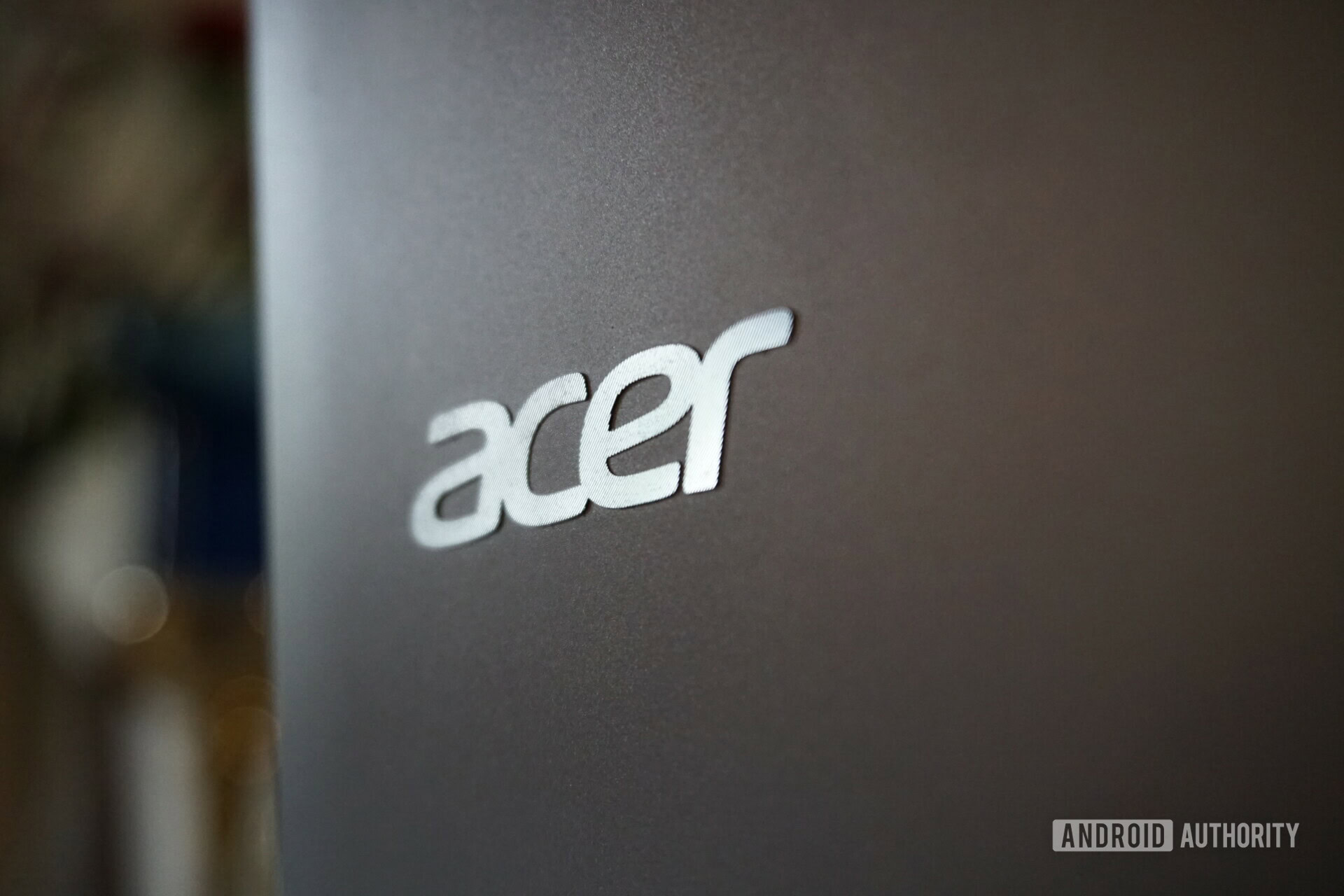
Acer’s Chromebook 13 is a beautiful device. It lacks the 360-degree hinge and included pen of the $900 “Spin” version, but that’s okay. Professionals may not need the versatility of a 2-in-1 device, making this clamshell version a perfect fit.
As we’ve shown here, Intel’s Core i5 processor is mostly overkill for Chrome OS, guaranteeing near-instantaneous performance in web and Android-based applications. I love the screen as well, providing rich colors and an incredibly high resolution for a Chromebook.
You can’t really go wrong with this model, even if you’re not an office professional. If you want a sleek, professional-looking Chromebook with a premium price at around $700, look no further than Acer’s Chromebook 13. If you just need a Chromebook for general use and don’t need an impressive exterior, you should look elsewhere.